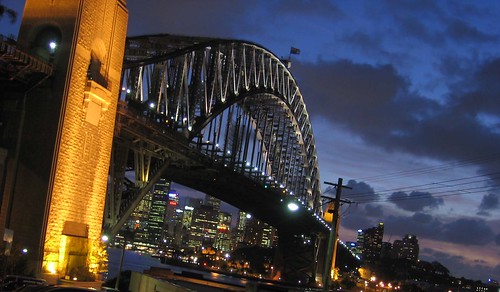Interest rates in Singapore have always been low.
| Bank | Base Interest Rate |
| DBS Bank | 0.25% |
| OCBC Bank | 0.25% |
| May Bank | 0.25% |
| HSBC | 0.125% |
| Stanchart (eSaver) | 0.40% |
As of Feb 2009, a savings account with one of the bigger banks in Singapore will only get you a tiny 0.25% return on your deposits. The rates above are the basic rate that you get for the first S$2000 to S$10,000 deposited at each bank, the exact amount varies. DBS, for example charges 0.25% for the first S$3,000 deposited. To put this into perspective, if you really deposit S$3,000 with DBS, you will only get S$7.50 interest after one year. That’s only worth 3 bowls of wanton mee at most!
If you decide to put your money into an online-only account with no ATM card, the Stanchart eSaver account gives you a higher return of 0.40% for your first S$50,000. That’s slightly better!
“… the Stanchart eSaver account gives you a higher return of 0.40% for your first S$50,000.”
But, would you like to get a guaranteed return of 2.95% instead? No, it’s not fixed deposits but something even safer, SGS Bonds.
| SGS Bond | Years to Maturity | *Indicative Yield % |
| N504100Z | 0.59 | 0.02 |
| N505100F | 1.10 | 0.27 |
| NX00100T | 1.34 | 0.29 |
| N506100E | 1.93 | 0.52 |
| NX01100H | 2.34 | 0.55 |
| N507100A | 3.10 | 0.73 |
| NX02100S | 3.34 | 0.78 |
| N507101E | 3.59 | 0.87 |
| N508100V | 4.10 | 1.01 |
| NX03100Z | 4.34 | 1.02 |
| NX04100F | 5.34 | 1.22 |
| N708100S | 6.34 | 1.51 |
| NY01100F | 7.51 | 1.71 |
| NY03100A | 9.51 | 1.94 |
| NY05100N | 11.51 | 2.35 |
| NY07100X | 13.51 | 2.53 |
| NZ07100S | 18.01 | 2.96 |
SGS Bonds are “Singapore Government Securities”. They are safe investments guaranteed by the Singapore government and are often compared with fixed deposits. The NZ07100S SGS Bond currently has a yield of 2.96%, that’s a guaranteed return of 2.95% after taking into account the transaction fees you pay to purchase the bond. SGS Bonds will be particularly attractive to those who wants a return higher than what is available from savings or fixed-deposit accounts. Investors from outside Singapore can also invest in SGS bonds!
In the next post, CashBench will focus on some of the key tips that you need to take note of when investing in SGS Bonds. How to invest in SGS Bonds? Is it really safe? When should I sell these bonds? If you’re still scratching your head, look out for the sequel to SGS Bonds at CashBench.











